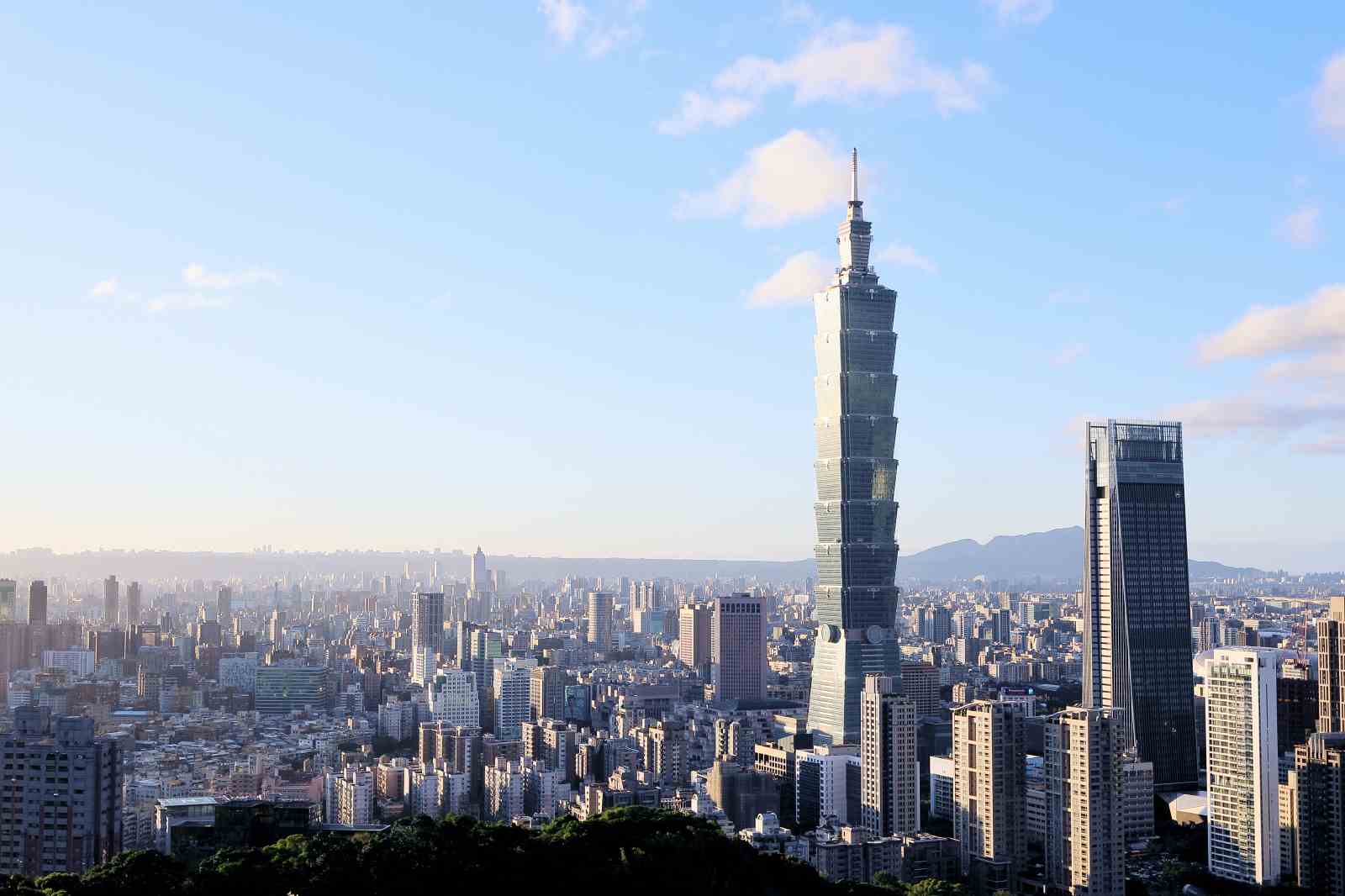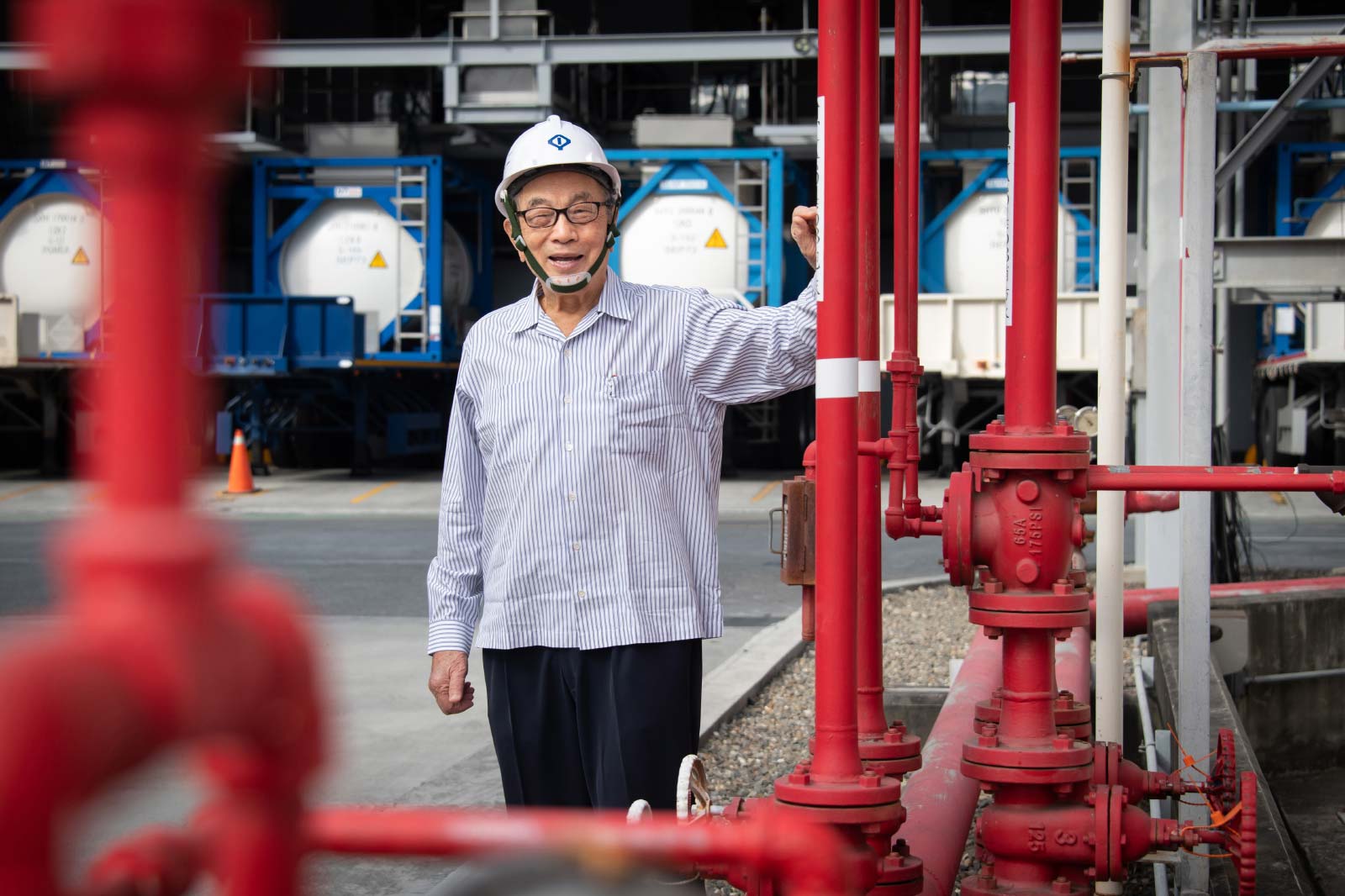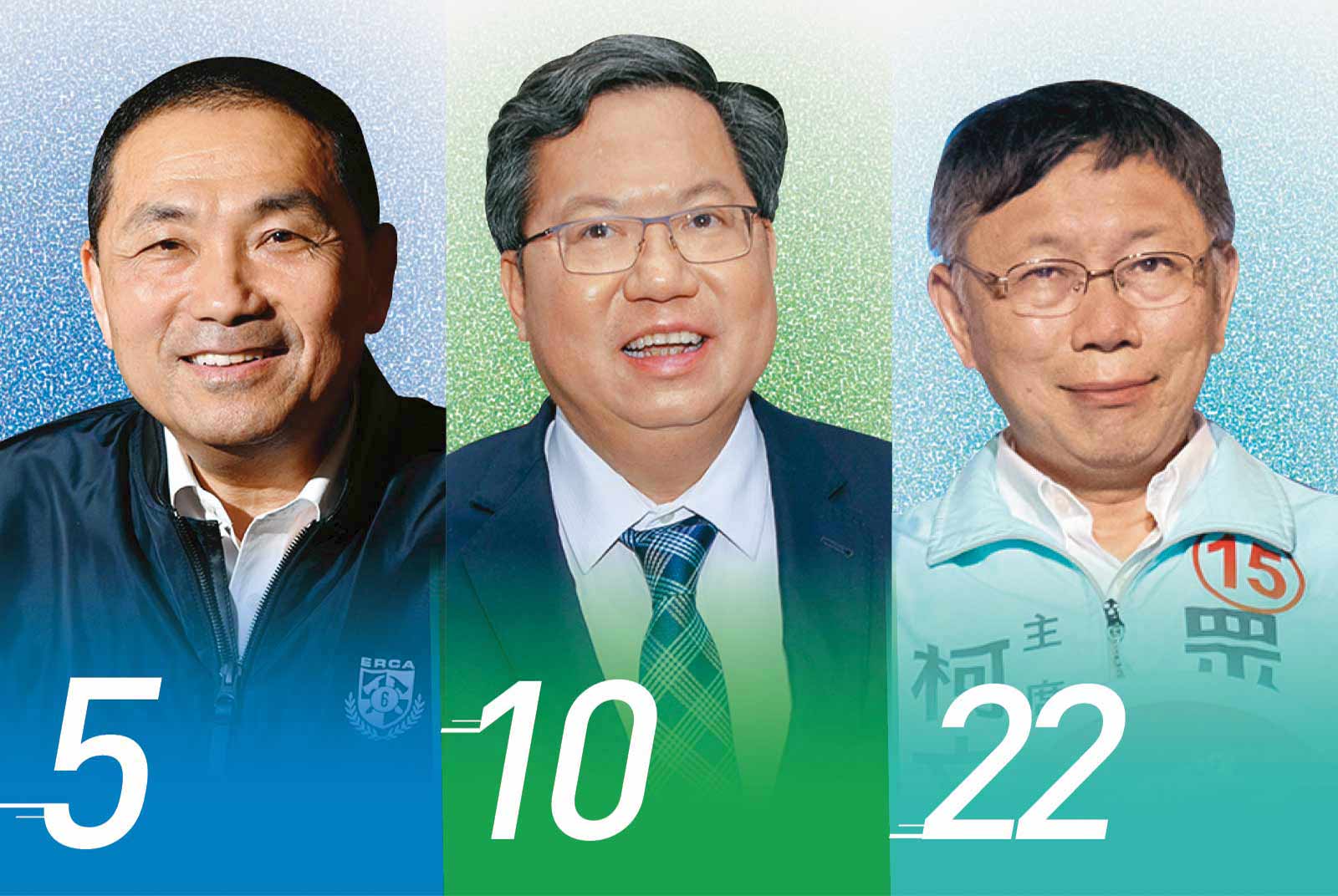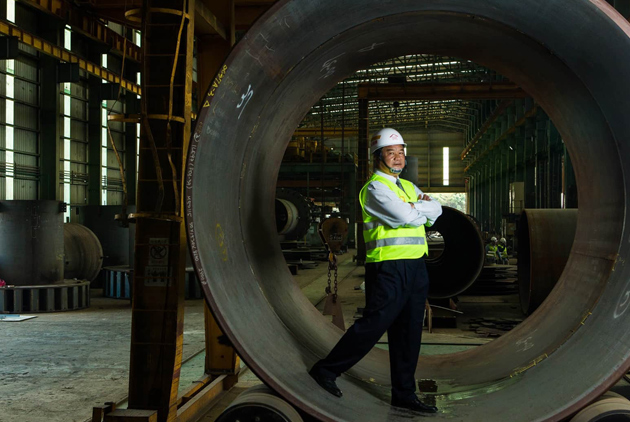A NT$300 Billion Gold Mine
Wellness – The New-Age Luxury
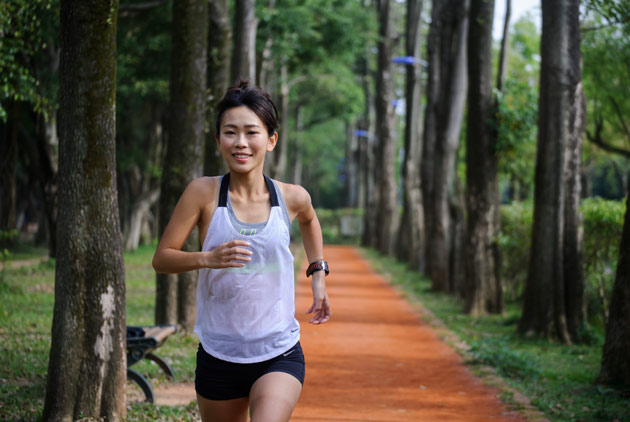
Source:Ming-Tang Huang
The new fashion trend in the service sector has nothing to do with the usual suspects, like glamorous apparel, sparkling jewelry or fast cars. It’s wellness, and companies are using many strategies to capitalize on soaring demand for this hot commodity.
Views
Wellness – The New-Age Luxury
By Yiting LinFrom CommonWealth Magazine (vol. 620 )
As dawn arrives on March 19, 12,000 runners gather on Taiwan’s northern coast in cold, misty weather, ready to go.
The starting gun goes off at 6:30 a.m. sharp, sending the huge sea of athletes on their way toward the Wanli Tunnel, rice fields and the coast. This is the New Taipei City Wan Jin Shi Marathon, where the heavy breathing of the competitors and the cheers of local residents along the course break through the early spring cold.
The marathon, held this year for the 15th time, is the only road race in Taiwan to have International Association of Athletics Federations (IAAF) bronze label certification (and none have gold or silver labels), making it a huge draw among Taiwanese runners.
It also provides a much-welcomed economic jolt to the area, injecting NT$100 million into the local economy and tourism sector. When the Howard Green Bay Resort Hotel began accepting reservations in November to coincide with the running of the marathon, its more than 100 rooms were fully booked within three minutes.
Forty-year-old Wu Tsai-chen is a marathon veteran, but when she arrives at the finish line she is no less thrilled and “checks in” with a photo of her smiling with her colleagues as they held their medals to celebrate their achievement.
“At the beginning, it was just for fun,” she says, recalling that she gave it a try a few years ago because a social group formed by her family started to take part in running activities. But she quickly became hooked.
“It’s very stimulating. I really want to continue to challenge myself,” she now asserts.
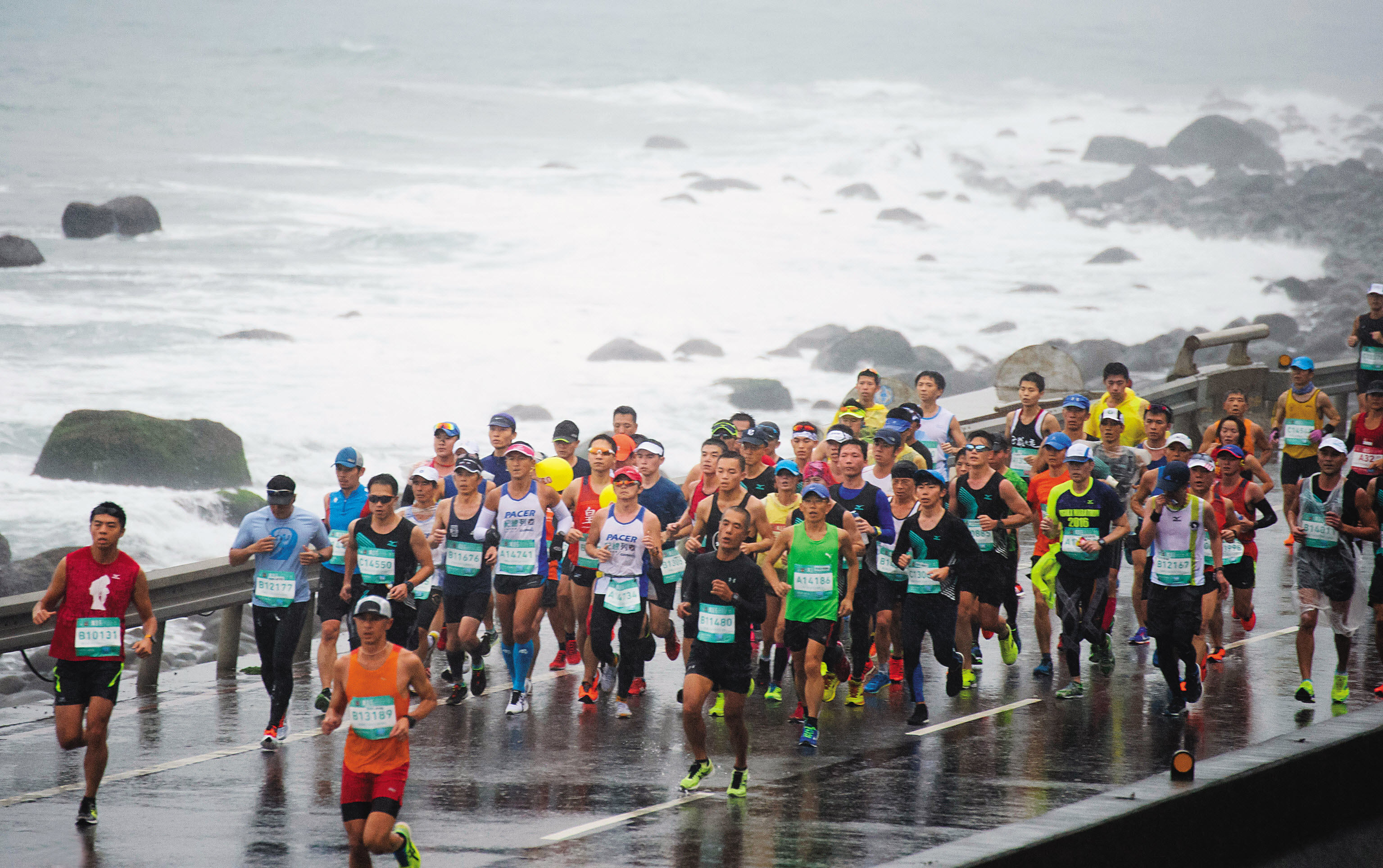 Runners in this year’s Wan Shi Jin Marathon challenge themselves along Taiwan’s northern coast. Their race numbers contained chips that recorded their time, just another example of how the marathon’s economic impact goes beyond just sports.
Runners in this year’s Wan Shi Jin Marathon challenge themselves along Taiwan’s northern coast. Their race numbers contained chips that recorded their time, just another example of how the marathon’s economic impact goes beyond just sports.
To get into the best possible shape and run good times, she started taking her diet seriously and got into weight training at the gym, shedding 10 kilograms in the process.
Challenging one’s limits, working up a sweat, changing one’s routine – these are all trends now taking Taiwan by storm. Running stands out as the most obvious example. Ten years ago, there were fewer than 100 road races but there were 512 last year, according to the new sports media outlet “Running Biji.” Though the 2016 number was slightly down from the previous year, an average of roughly 10 races were still held per week.
Vivid Lo, insight research director at Dentsu Aegis Network, says consumers’ growing emphasis on their own mental and emotional well-being has opened the door to many commercial opportunities. As with running, painting, flower arranging or DIY experiences all offer people the chance to embrace life and reduce their stress levels, she observes.
The global Vegan movement craze has also caught fire in Taiwan, with people not only eating vegetarian but opting for clothes, cosmetics or other items that do not harm animals.
Twenty-eight-year-old blogger Bluesomeone is one of the Vegan faithful. “If everybody has a little more empathy for others and makes a small contribution to the world, happiness will be sustained for a long time,” she insists. She has extended her support to products and services that embrace fair trade and eco-friendly practices, believing that achieving a balance between people and the environment is a form of “well-being.”
New Treasure = New Gold Mine
This pursuit of a healthy body, mind and spirit has emerged as a “new treasure” in which many consumers are now willing to invest considerable time and money and a “new gold mine” for companies.
The catchphrase embodying then new phenomenon, “Wellness is the new luxury,” has been highlighted in Forbes, Vogue and the New Yorker, reflecting how the world has redefined what is precious.
“In principle, health is something basic,” says Liou Wei-gong, a sociology professor at Soochow University and an expert on the sociology of consumption. But at a time when the world seems on the verge of collapse, afflicted with food safety scandals, the threat of lifestyle diseases and climate and ecological change, “human health has turned into something precious and elusive.”
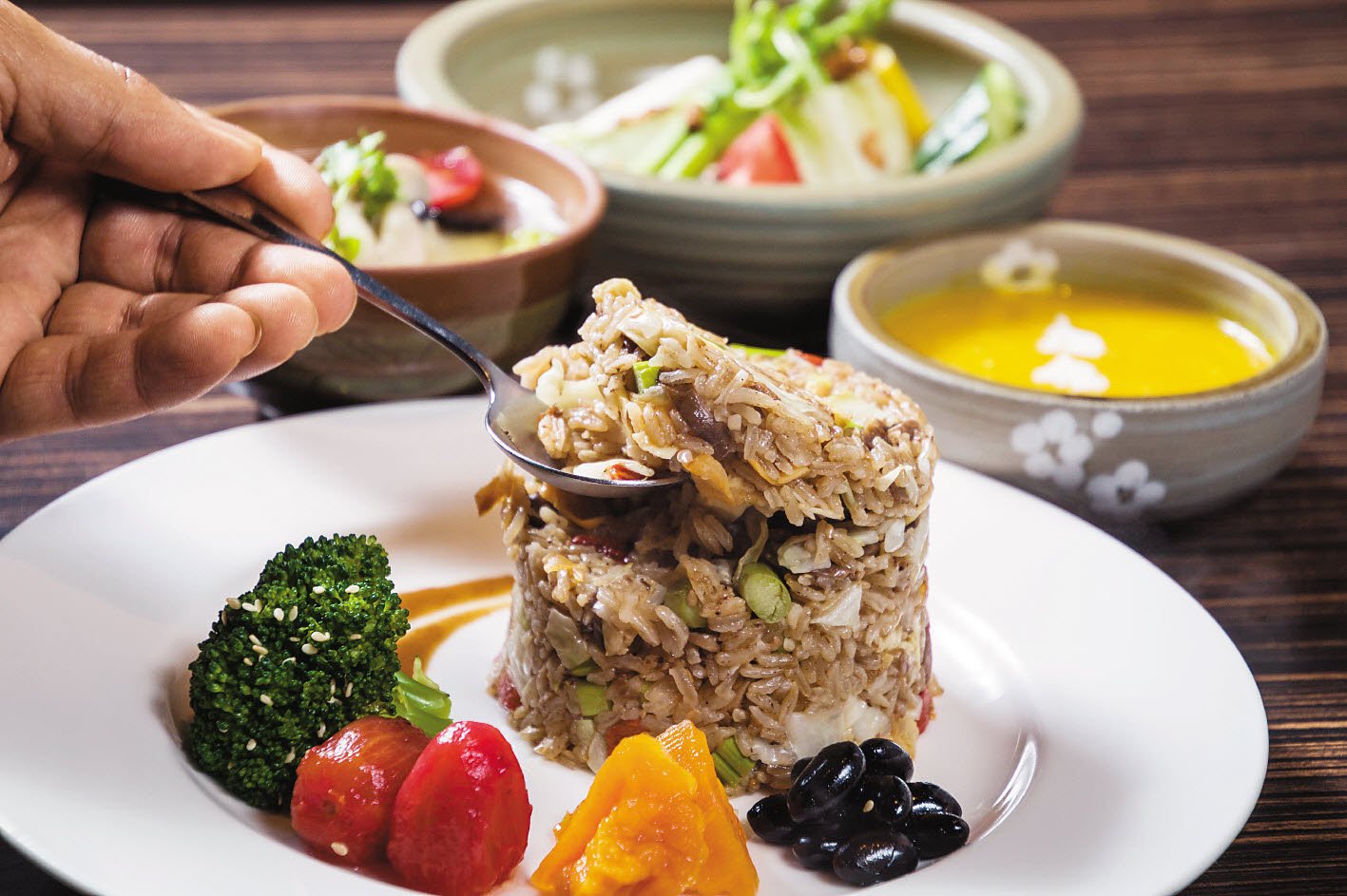 Easy House Vegetarian Cuisine elegant fare satisfies people’s quest for good food and wellness.
Easy House Vegetarian Cuisine elegant fare satisfies people’s quest for good food and wellness.
“Wellness as the new luxury” has also created a lucrative commercial niche. In its report on the Top 10 Global Consumer Trends for 2017, market research firm Euromonitor International said that as “material things” have paled as indicators of achievement, wellness has become the new status symbol in the eyes of many consumers.
“Healthy living is becoming a status symbol, as more consumers opt to flaunt their passion for wellness through paying for boutique fitness sessions, “athleisure” clothing, food with health-giving properties, and upscale health and wellness holidays,” the report said.
International accounting firm Pricewaterhouse Coopers said the global wellness and fitness market was worth nearly US$1.49 trillion (about NT$45 trillion) in 2015, while Taiwan’s Ministry of Economic Affairs has estimated that the revenues of the domestic health and wellness services sector will double to NT$281.9 billion by 2025.
To reflect this new lifestyle trend, CommonWealth Magazine added a new service sector – “Health and Wellness Services” – to its annual Golden Service Awards survey this year. The new category will encompass everything from running and professional baseball to fitness centers, health check centers and sporting goods.
Social Media Bolstering the New Craze
The new search for wellness has been fueled by social media’s massive reach, which has magnified the desire many have for pursuing the “perfect me.”
David Yu, chief branding and strategy officer at Dentsu Aegis Network, cites the newfound passion among Taiwanese for camping as an example.
“From posting your plans to go camping, to inviting friends, to actually camping and then having your friends see it happen, they are all different kinds of experiences,” he says. “The Facebook social community is like reading a book because it enables people to have a broad variety of experiences and reinforces your motivation to do what you want to do.”
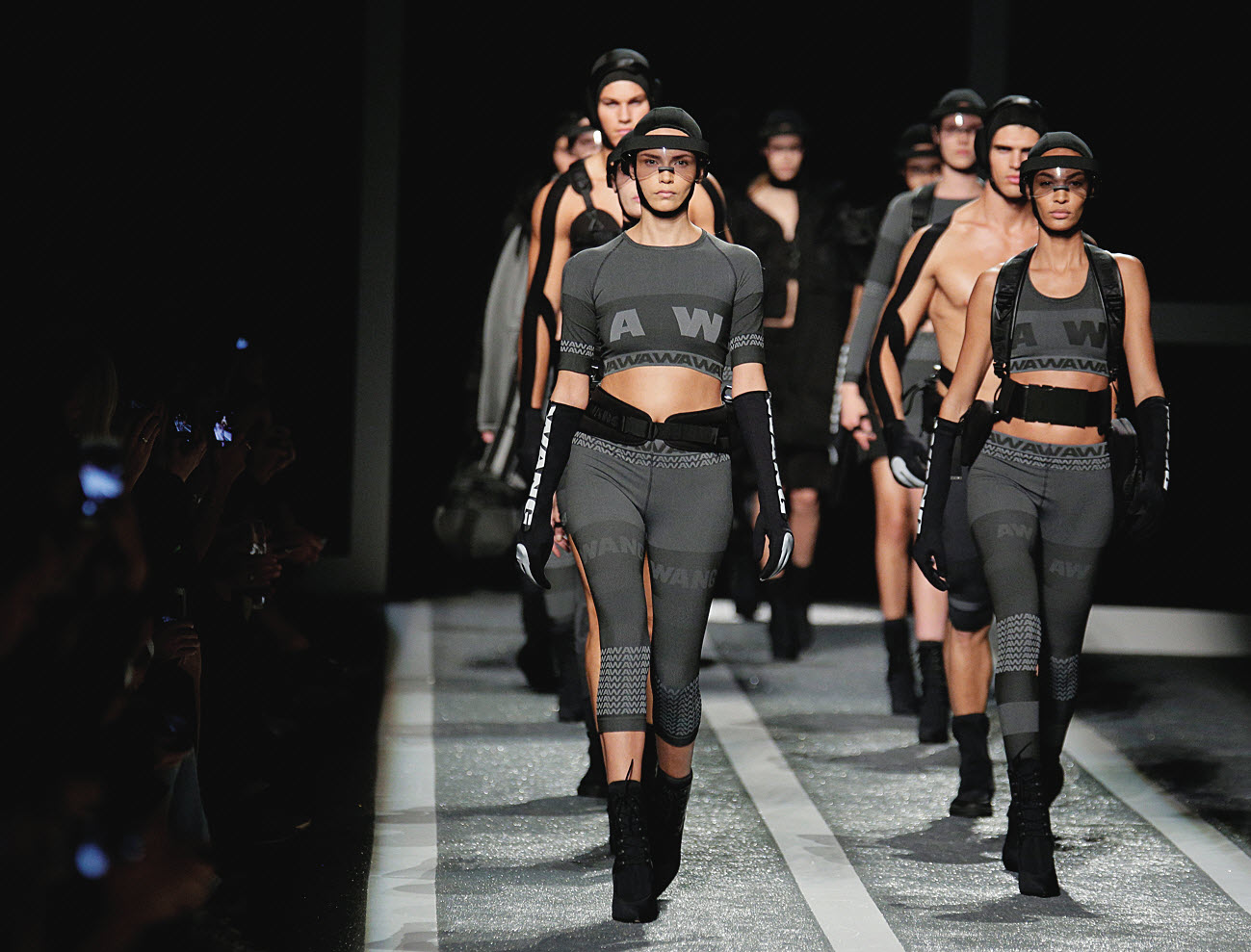 Renowned designer Alexander Wang teamed up with H&M on “athleisure”fashion.
Renowned designer Alexander Wang teamed up with H&M on “athleisure”fashion.
The power of Facebook or Instagram’s social communities can give massive exposure to a photo or short video of food, exercising, running or cycling and turn them into tools to build one’s own image and showcase one’s lifestyle.
The convergence of these trends has pushed the value of the fitness and wellness market to new heights. In Forbes’ 2016 list of the world’s most valuable brands, for example, Nike ranked 18th with a brand value of US$27.5 billion, outpacing such traditional stalwarts as tech-company Hewlett-Packard, car giant Mercedes-Benz Daimler Benz and luxury brand Louis Vuitton.
Other sectors in Taiwan have also jumped on the health and wellness bandwagon. Convenience stores and restaurants are aggressively promoting foods that are light or organic, while hotel groups try to appeal to the yoga crowd.
They all realize that as consumers pursue a “new” image of luxury, they have no choice but to follow, adopting several different strategies in the process.
Strategy No. 1:
Build a Sustainable Ecosystem
Nike’s success in recent years has been underpinned by the integration of its online and offline communities, from the Nike+ running app that allows people to share their experiences with others to the Nike Woman Running campaign designed to get more women into running. It has also introduced Nike+ Training Club and Nike+ Run Club training programs to help athletes prepare for competitions.
But Nike has no interest in resting on its laurels. It continues to rely on data and the cultivation of its social communities to help consumers improve their well-being through running, enhancing its brand awareness in the process.
Strategy No. 2:
Women: Fitness and Fashion
The “Running Girl” has replaced the “Party Girl” in popular culture, but fashion remains the necessary hook companies need to reel in female consumers, which is why the traditional fashion industry is intent on getting in on this lucrative market.
“Feeling good is the new looking good: more fashion players can start profiting from the wellness movement rather than competing with it,” was the assessment of The State of Fashion 2017 report compiled by international consulting firm McKinsey & Company and fashion intelligence media the Business of Fashion. The “athleisure” trend is now a regular on the runway, and Vogue magazine in Taiwan has even written about hiking fashion and accessories.
Even Pinkoi, an online shopping platform showcasing unique and original design goods, has found the wellness trend to be good for business. An analysis of their hottest selling items revealed that demand rose last year for healthy and organic items or exercise-related products, with sales of outdoor gear growing 130 percent.
“When women exercise, they tend to take pictures of themselves or connect with their communities online. So they are particularly conscious of whether what they are wearing or even the water bottle they are using looks good,” says Echo Cheng, who works for Pinkoi in public relations. “We try to follow consumers’ footsteps and add new products.”
Strategy No. 3:
Exploiting Niches, Personalization
When competition intensifies in a particular field, companies have to identify and exploit niches. Fitness chain Curves embraces that philosophy by catering exclusively to women, a strategy that has helped it expand to 117 outlets in Taiwan.
Huang Yu-ying, a research fellow in the Commerce Development Research Institute’s Department of Business Model Innovation, says the revenues of Taiwan’s fitness market have more than doubled over the past 10 years to NT$5.2 billion today. But there is also the sense, she says, “that everybody is competing for the same pie and that companies have to narrow their focuses and pay more attention to details.”
Some fitness operators have capitalized on the market for children’s fitness. Darren Lee, a former gymnast who is now CEO of Fly Kids, saw that children in urban areas want to exercise but can’t find anywhere safe to do so and that the high-tech lifestyle has resulted in children with poor postures who don’t sit up straight.
 Fly Kids’ use of gymnastics to help children grow physically has been a hit with parents.
Fly Kids’ use of gymnastics to help children grow physically has been a hit with parents.
He decided to promote the all-round physical development of children through the use of gymnastics apparatus like the high bar and balance beam to help them build their strength. Since starting with an outlet in Zhubei in 2011, Fly Kids now has eight branches, and in March it set up a new outlet (in??) Jiangsu province in gymnastics powerhouse China.
Similarly, a hotel operator has launched a “yoga camp” to ride the “relaxation” gravy train and differentiate itself from its competitors. Located in the major hotel battleground of Kenting, the Gloria Manor offers a special four-day package with six yoga classes.
“Some people will go to Thailand for a detox camp or yoga camp. We want to forge different themes in Taiwan,” says Eve Lo, the marketing & communication manager of the Gloria Hotel Group.
Strategy No. 4:
Opportunities beyond Fitness Itself
The onset of technology has extended fitness’s value to other opportunities.
In 2015, athletic footwear manufacturer Pou Chen Group acquired sports management company Bros Sports Marketing to take advantage of its 15 years in the field and changed the company’s name to PCG Bros.
 Pure Yoga says the ratio of men to women in its classes has risen from 1:9 in the past to 3:7 today.
Pure Yoga says the ratio of men to women in its classes has risen from 1:9 in the past to 3:7 today.
Beyond organizing this year’s Wan Jin Shi Marathon, PCG Bros. set up the “pb+” digital platform, hoping to use the high-tech platform to make sports fun and match consumers with services they’re interested in, such as tickets for sports events, the latest sports news, sports merchandise and live streamed sports broadcasts.
Of those, live sports tap into consumers deepest emotions and represent a real business opportunity. In 2016, the PCG Bros. network was the exclusive online broadcaster of the Chinatrust Brothers’ home baseball games, and drew a viewership of nearly 300,000 viewers at its peak.
Strategy No. 5:
Companies outside the Industry Jumping In
Even companies whose core businesses have nothing to do with wellness or fitness are looking to cash in on this growing market, including 7-Eleven convenience store operator President Chain Store Corp.
After Taiwan was rocked by a spate of food safety scandals in 2013 and 2014, 7-Eleven and Formosa Plastics Group subsidiary Formosa Environmental Technology Corporation, which sells organic foods and fertilizers, formed an alliance in 2015 to sell organic produce at 7-Eleven convenience stores. The produce has found its way into 570 stores to date, with plans to expand distribution to 800 stores by the end of this year.
The partnership of the two brands has driven annual growth in the category’s sales of 70 percent and drawn nearly 1 million in-store purchases.
“Small packages, healthy, and organic are trends. There aren’t many varieties of fresh produce yet, but there will be more in the future. That’s our opportunity,” says President Chain Store Marketing Group chief officer Tony Hsieh.
Unlike the more typical methods of distribution of organic produce, mainly home delivery or dedicated organic food stores, this new model “brings healthy food into neighborhoods, even to corners of small alleys,” says Formosa Environmental Technology Vice President Lin Chien-nan.
Strategy No. 6:
Be Authentic or Lose Customers
In this age where wellness is the new luxury, “authenticity” has become an increasingly important attribute for companies.
“There have been so many ads appealing to health and wellness in the past few years that consumers are tired of them. What consumers want are the real deals, things that can really make the world better, rather than a lot of marketing and packaging,” stresses Soochow University’s Liou Wei-gong.
Faced with growing consumer “awareness,” companies must insist on operational transparency, environmental sustainability and economic fairness within their own organizations before emphasizing their brand or product values in the marketplace.
From sweat, soul and relationships to the ecological environment, consumers are yearning to make themselves and their world better, spawning a new trend that is rewriting the definition of “luxury.” It is a trend that will inevitably change the face of the service sector.
Translated from the Chinese by Luke Sabatier


